CNC turning tools are essential components in modern manufacturing, playing a pivotal role in the turning process. These tools are specifically designed for use in Computer Numerical Control (CNC) lathes, where they shape and finish materials by removing excess material, typically from cylindrical workpieces. The turning process involves rotating the workpiece while a stationary cutting tool removes material to achieve the desired shape. This method contrasts with milling, where the cutting tool rotates, and the workpiece remains stationary.
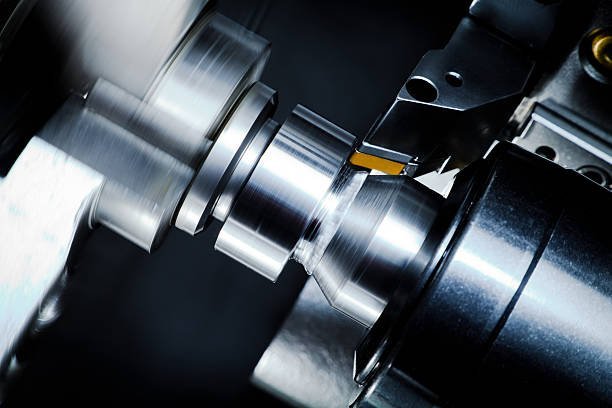
The importance of CNC turning tools in manufacturing cannot be overstated. They provide precision, efficiency, and consistency that are unmatched by manual tools. CNC turning tools are programmed to follow exact specifications, ensuring that each product meets stringent quality standards. This level of accuracy is particularly vital in industries such as aerospace, automotive, and medical device manufacturing, where even the smallest deviations can have significant consequences.
Moreover, CNC turning tools offer several advantages over manual tools. Firstly, they significantly reduce the time required for production. Automated operations allow for faster material removal and higher throughput, leading to increased productivity. Secondly, CNC turning tools enhance repeatability. Once a program is set, the same process can be repeated with minimal variation, ensuring uniformity in large batches of products. Thirdly, these tools improve safety in the workplace. Automation reduces the need for manual intervention, thereby minimizing the risk of human error and accidents.
In summary, CNC turning tools are indispensable in modern manufacturing for their precision, efficiency, and consistency. Their role in the turning process highlights the advancements in technology that have revolutionized the way we produce high-quality, complex components. As we delve deeper into the specifics of CNC turning tools, it becomes evident why they are a cornerstone of contemporary manufacturing practices.
Types of CNC Turning Tools
CNC turning tools are essential for precision machining and can be categorized based on their specific functions and applications. The primary types of turning tools include turning inserts, boring bars, grooving tools, parting (cut-off) tools, threading tools, and specialty tools like knurling tools and form tools. Each type has unique features and benefits that make them suitable for particular machining tasks.
Turning inserts are a fundamental component in CNC turning operations. They come in various shapes, sizes, and materials, such as carbide and ceramic. Negative inserts are robust and durable, designed for heavy-duty cutting, while positive inserts offer a sharper cutting edge for smoother finishes and reduced cutting forces. Carbide inserts are widely used for their hardness and wear resistance, making them ideal for high-speed applications. Ceramic inserts, on the other hand, are excellent for high-temperature applications due to their thermal stability.
Boring bars are used for internal machining and are crucial for enlarging or finishing pre-existing holes. They provide high precision and stability, making them suitable for deep hole boring and intricate internal features. Grooving tools are designed to create grooves or recesses in a workpiece and are essential for applications requiring specific profiles, such as O-ring seats and retaining ring grooves.
Parting tools, also known as cut-off tools, are used to sever parts from the main workpiece. They are designed to make clean and precise cuts, ensuring minimal material waste and reducing the need for secondary operations. Threading tools are specialized for creating external and internal threads, essential for components that require screw fastening. These tools are available in various pitches and profiles to accommodate different thread standards.
Specialty tools like knurling tools and form tools serve unique purposes in CNC turning. Knurling tools create textured patterns on the surface of a workpiece, providing better grip or aesthetic appeal. Form tools are custom-shaped to produce specific profiles or contours in a single pass, enhancing efficiency and consistency in production.
Understanding the different types of CNC turning tools and their applications is crucial for optimizing machining processes and achieving high-quality results.
Material Considerations for CNC Turning Tools
When selecting CNC turning tools, understanding the material composition of the tools themselves is crucial. Tool materials such as high-speed steel (HSS), carbide, ceramics, cubic boron nitride (CBN), and polycrystalline diamond (PCD) each offer unique benefits and limitations. The choice of tool material significantly impacts the performance, efficiency, and quality of machining operations.
High-speed steel (HSS) is known for its toughness and resistance to wear. It is a versatile material that performs well under varying cutting conditions, making it suitable for machining softer materials like aluminum and mild steel. However, HSS tools may wear out quickly when used on harder materials, leading to increased downtime for tool changes.
Carbide tools, made from a combination of tungsten carbide and cobalt, provide excellent hardness and wear resistance. They are ideal for high-speed machining of harder materials such as stainless steel and titanium. Carbide tools maintain their cutting edge for longer periods, reducing the frequency of tool replacements and improving overall productivity.
Ceramic tools offer superior heat resistance and hardness, making them suitable for high-speed machining of cast iron and hardened steels. They can withstand higher cutting temperatures, which helps in maintaining a sharp cutting edge. However, ceramic tools are more brittle than carbide and HSS, making them susceptible to chipping under heavy loads or interrupted cuts.
CBN (cubic boron nitride) tools are among the hardest materials available for cutting applications. They are particularly effective for machining hardened steels and superalloys. CBN tools provide excellent wear resistance and prolonged tool life, which is beneficial for high-precision machining tasks.
PCD (polycrystalline diamond) tools are renowned for their exceptional hardness and abrasion resistance. They are ideal for machining non-ferrous metals, composites, and abrasive materials like graphite. PCD tools offer superior surface finishes and extended tool life, making them suitable for high-precision applications where surface quality is paramount.
The selection of CNC turning tools also depends heavily on the workpiece material. For instance, aluminum’s softness and tendency to stick to cutting edges make HSS and PCD tools favorable choices. In contrast, machining steel, especially hardened varieties, might necessitate the use of carbide or CBN tools for optimal performance. Titanium, known for its strength and tendency to cause tool wear, often requires carbide tools to manage the high cutting forces and temperatures involved.
Tool Holders and Accessories for CNC Turning
Tool holders are crucial components in CNC turning operations, serving as the interface between the machine and the cutting tool. They play a significant role in ensuring machining accuracy and tool performance. Among the various tool holders available, VDI holders, BMT holders, and quick-change systems are some of the most commonly used in the industry.
VDI (Verband Deutscher Ingenieure) holders are standardized tool holders designed for quick tool changes and high repeatability. They are often used in turret-type CNC lathes and provide a robust clamping mechanism that enhances machining accuracy. BMT (Base Mount Tooling) holders, on the other hand, are known for their rigidity and precision, making them ideal for heavy-duty turning operations. These holders are mounted directly to the machine turret, reducing vibrations and improving tool life.
Quick-change systems are increasingly popular due to their ability to minimize downtime during tool changes. These systems allow for rapid replacement of tools without the need for additional adjustments, significantly boosting productivity. By using quick-change tool holders, operators can achieve consistent and precise tool positioning, which is essential for maintaining high-quality machining standards.
In addition to tool holders, various accessories enhance the performance and efficiency of CNC turning tools. Coolant systems are critical in managing the heat generated during machining, thereby prolonging tool life and ensuring superior surface finishes. Tool pre-setters are used to measure and set tool dimensions accurately before they are mounted on the machine, reducing setup times and increasing overall productivity.
Tool monitoring systems are another valuable accessory, providing real-time data on tool condition and performance. These systems help in detecting wear and potential breakages, allowing for timely interventions and reducing the risk of costly downtime. By integrating these accessories, manufacturers can optimize the performance of their CNC turning tools, ensuring efficient and precise machining processes.
Selecting the Right CNC Turning Tool
Selecting the appropriate CNC turning tool is crucial for achieving optimal machining results. Various factors must be considered to ensure the chosen tool meets the specific requirements of the task at hand. One of the primary considerations is the material type being machined. Different materials, such as steel, aluminum, or titanium, have distinct properties that influence tool selection. Material hardness and machinability play significant roles; harder materials typically require tougher and more wear-resistant tools.
Another critical factor is the desired surface finish and dimensional accuracy. The choice of CNC turning tools can significantly impact the smoothness and precision of the finished product. Tools with a finer nose radius, for example, can achieve smoother finishes, whereas larger nose radii might be employed for rougher cuts. Cutting speed, feed rate, and depth of cut are also essential considerations. These parameters determine the efficiency and quality of the machining process, making it vital to select a tool that can operate effectively under the specified conditions.
Tool geometry is another pivotal aspect to consider when selecting CNC turning tools. The rake angle, clearance angle, and nose radius are all geometric features that influence cutting performance. The rake angle affects the cutting force and chip flow, while the clearance angle ensures sufficient space to prevent tool workpiece contact. The nose radius, as previously mentioned, impacts the surface finish and tool strength. Optimizing these geometric parameters helps in achieving the desired machining outcomes.
In summary, selecting the right CNC turning tool involves a comprehensive assessment of various factors, including material type, hardness, machinability, surface finish, dimensional accuracy, cutting speed, feed rate, depth of cut, and tool geometry. By carefully considering these elements, machinists can ensure they choose the most suitable tool for their specific applications, leading to enhanced efficiency and superior results in their CNC turning operations.
Applications of CNC Turning Tools
CNC turning tools are indispensable in modern manufacturing, offering precision and efficiency across various operations. These tools are pivotal in performing fundamental tasks such as facing, contour turning, taper turning, and threading. Each of these operations caters to specific requirements, ensuring high-quality output and adherence to stringent tolerances.
In the automotive industry, CNC turning tools are extensively used to produce components like engine parts, transmission systems, and custom-designed mechanical parts. The precision of CNC turning tools ensures that parts fit perfectly, enhancing overall vehicle performance and reliability. For example, contour turning is crucial for creating complex geometries in camshafts and crankshafts, while threading is essential for producing high-quality screws and bolts.
The aerospace sector also relies heavily on CNC turning tools for manufacturing critical components such as turbine blades, landing gear parts, and structural elements. The ability to work with a variety of materials, including high-strength alloys and composites, makes CNC turning tools ideal for meeting the demanding standards of aerospace engineering. Taper turning, for instance, is often employed to create parts with precise angular dimensions, which are essential for aerodynamic efficiency.
In the medical field, CNC turning tools are used to fabricate intricate and precise components for medical devices, surgical instruments, and prosthetics. The accuracy and repeatability of CNC turning processes ensure that these components meet the rigorous standards required for medical applications. For example, threading operations are crucial for producing screws used in orthopedic implants, ensuring secure and stable fittings.
Additionally, CNC turning tools find applications in other industries such as electronics, where they are used to create components like connectors and housings, and in the oil and gas sector for producing robust parts used in drilling and extraction equipment. Each industry benefits uniquely from the capabilities of CNC turning tools, leveraging their precision, versatility, and efficiency to enhance product quality and operational performance.
Advantages of Using CNC Turning Tools
CNC turning tools offer unparalleled precision and accuracy, making them indispensable in modern manufacturing processes. These tools are capable of achieving tight tolerances, which is crucial for producing high-quality components that meet stringent specifications. The accuracy of CNC turning tools ensures that each part is consistently produced to the exact measurements, reducing the need for manual adjustments and minimizing errors.
The versatility of CNC turning tools is another significant advantage. They can perform a wide range of operations, including threading, drilling, and boring, all within a single setup. This capability not only streamlines the manufacturing process but also reduces the time and effort required to switch between different tools and machines. The ability to perform multiple operations with one setup enhances overall efficiency and productivity.
One of the key benefits of CNC turning tools is their efficiency. These tools can operate at high speeds, resulting in faster production rates. This increased speed does not compromise the quality of the output, as the precision of CNC turning tools ensures that even at high speeds, the parts produced are of superior quality. The efficiency of CNC turning tools translates to shorter production cycles and quicker turnaround times, which is essential in meeting tight deadlines and customer demands.
In terms of cost-effectiveness, CNC turning tools offer significant savings. The automation of the turning process reduces the need for manual labor, leading to lower labor costs. Additionally, the high precision and consistency of CNC turning tools minimize material waste, further contributing to cost savings. The initial investment in CNC turning equipment can be substantial, but the long-term benefits, including reduced operational costs and increased productivity, outweigh the initial expenditure.
Overall, the advantages of using CNC turning tools are manifold. Their precision, versatility, efficiency, and cost-effectiveness make them a vital component of modern manufacturing, driving innovation and productivity across various industries.
Maintenance and Care of CNC Turning Tools
Proper maintenance and care of CNC turning tools are essential for ensuring their longevity and optimal performance. Regular cleaning is a fundamental aspect of this maintenance routine. After each use, CNC turning tools should be meticulously cleaned to remove any debris, chips, or coolant residues. This can be achieved using a combination of compressed air and gentle brushing. Ensuring that the tools are free from contaminants helps in maintaining their cutting precision and prolongs their life.
Storing CNC turning tools correctly is another critical aspect of their upkeep. Tools should be stored in a dry environment to prevent corrosion. Utilizing tool racks or holders designed specifically for CNC turning tools can help in organizing them efficiently and preventing any accidental damage. It’s advisable to keep the tools in their protective cases when not in use, especially when transporting them, to safeguard against any physical impact.
Regular inspection of CNC turning tools for wear and damage is crucial. Operators should routinely check for signs of wear, such as dull edges, chips, or any irregularities in the tool geometry. Using a magnifying glass or a microscope can aid in detecting subtle signs of wear that may not be visible to the naked eye. Any tools found to be worn or damaged should be addressed immediately to avoid compromising the quality of the workpiece or causing further damage to the machine.
Reconditioning processes like sharpening and regrinding play a pivotal role in the maintenance of CNC turning tools. Sharpening involves honing the cutting edge to restore its sharpness, typically using specialized grinding machines. Regrinding, on the other hand, may involve reshaping the tool to its original specifications. Both processes require precision and should ideally be performed by experienced technicians to ensure that the tool retains its original performance characteristics. Regular reconditioning not only extends the life of the tools but also ensures consistent machining quality.
Common Issues and Troubleshooting
CNC turning tools are essential for precision machining, but they often encounter issues that can hamper efficiency and quality. One of the most prevalent problems is tool wear and breakage. Tool wear occurs naturally over time due to the friction and heat generated during the cutting process. However, excessive wear can be a sign of incorrect tool selection, improper cutting speeds, or inadequate cooling. To prevent premature tool wear, it is crucial to choose the right material for the tool, optimize cutting parameters, and ensure sufficient coolant flow.
Tool breakage is another critical issue, often resulting from improper tool setup, excessive cutting forces, or material inconsistencies. Ensuring that the tool is securely clamped and aligned can mitigate breakage risks. Additionally, reducing the feed rate and depth of cut can help manage cutting forces, thereby extending tool life.
Poor surface finishes are a common challenge in CNC turning operations. This issue can arise from factors such as tool wear, incorrect cutting parameters, or machine vibrations. To improve surface finish, regularly inspect and replace worn tools, and fine-tune cutting speeds and feeds. Moreover, employing high-quality CNC turning tools designed for finishing can significantly enhance the surface quality of the workpiece.
Chatter and vibration are detrimental to both the tool and the workpiece, leading to unacceptable surface finishes and potential damage. These problems are typically caused by excessive tool overhang, improper tool geometry, or unstable workholding. Minimizing tool overhang, selecting tools with appropriate geometries, and ensuring robust workholding can substantially reduce chatter and vibration. Additionally, adjusting spindle speeds to avoid resonance frequencies can further stabilize the turning process.
By addressing these common issues through preventive strategies and solutions, machinists can enhance the performance and lifespan of their CNC turning tools, ensuring efficient and high-quality production.
Innovations and Trends in CNC Turning Tools
Recent advancements in CNC turning tools have significantly impacted their efficiency and performance. One of the most notable innovations is the development of new tool materials. High-performance composites and advanced ceramics are increasingly used in the manufacture of turning tools. These materials offer superior hardness, wear resistance, and thermal stability, which are crucial for high-speed machining and extended tool life.
Coating technologies have also seen remarkable progress. Modern coatings, such as Titanium Aluminum Nitride (TiAlN) and Diamond-Like Carbon (DLC), enhance the wear resistance and heat dissipation properties of turning tools. These coatings reduce friction, prevent built-up edges, and maintain the tool’s cutting efficiency over longer periods. Consequently, the adoption of these advanced coatings improves the overall productivity and quality of CNC machining operations.
The integration of IoT and data analytics into CNC turning tools has ushered in a new era of smart tooling. These innovations enable real-time monitoring and adaptive control of machining processes. Smart turning tools are equipped with sensors that collect data on tool wear, temperature, and vibration. This data is then analyzed to optimize cutting parameters, predict tool life, and schedule maintenance, ensuring continuous high performance and minimizing downtime.
Industry 4.0 has further revolutionized the design and usage of CNC turning tools. Through the use of interconnected systems and advanced data analytics, manufacturers can achieve unprecedented levels of automation and precision. For instance, smart tooling systems can communicate with CNC machines to automatically adjust cutting speeds and feeds based on real-time conditions. This not only enhances the efficiency of the machining process but also extends the lifespan of the tools.
These innovations and trends in CNC turning tools are paving the way for more efficient, reliable, and intelligent manufacturing processes. As the industry continues to evolve, the adoption of advanced materials, coatings, and smart technologies will be crucial in maintaining a competitive edge in precision machining.
Safety Considerations When Using CNC Turning Tools
Ensuring safety when working with CNC turning tools is paramount. Operators must adhere to stringent safety protocols to mitigate risks associated with these high-precision machines. Personal protective equipment (PPE) is crucial; operators should always wear safety glasses to protect against flying debris, hearing protection to guard against prolonged exposure to loud noises, and appropriate gloves to handle sharp tools and materials. Additionally, wearing flame-resistant clothing can provide an added layer of protection against sparks and hot metal.
Safe handling and setup of CNC turning tools start with a thorough inspection of the machine and tools. Operators should check for any wear or damage before use. Ensuring that all components are correctly installed and secured can prevent mechanical failures. It is also essential to keep the work area clean and free of obstructions. Clutter can lead to accidents and hinder smooth operation.
Operating CNC machines requires a comprehensive understanding of the machine’s functions and controls. Operators should follow the manufacturer’s guidelines and undergo proper training. Using the correct CNC turning tools for specific tasks is critical to prevent tool breakage and ensure precision. Always double-check programming inputs to avoid errors that could lead to machine malfunctions or accidents.
Emergency procedures are a vital aspect of safety protocols. In the event of an accident or tool failure, operators should know how to quickly shut down the machine. Familiarity with the location and operation of emergency stop buttons can prevent further injury or damage. Additionally, having a clear emergency plan, including first aid kits and fire extinguishers readily available, can make a significant difference in handling unexpected situations.
By incorporating these safety measures, operators can effectively minimize the risks associated with CNC turning tools, ensuring a safer and more productive working environment.
Conclusion and Future Outlook
CNC turning tools have revolutionized the manufacturing industry, offering unparalleled precision, efficiency, and versatility. Throughout this guide, we have explored the various types of CNC turning tools, their specific applications, and best practices for their use. From carbide inserts and tool holders to specialized threading and grooving tools, each type of CNC turning tool plays a crucial role in optimizing machining processes. The advantages of using these tools are significant, ranging from enhanced accuracy and reduced production times to lower operational costs and increased product consistency.
The applications of CNC turning tools are vast, spanning industries such as automotive, aerospace, medical, and electronics. These tools enable the production of complex geometries and high-precision components that meet stringent industry standards. By integrating CNC turning tools into their operations, manufacturers can achieve greater flexibility and responsiveness to market demands, thereby enhancing their competitive edge. (CNC Tune for Instagram)
Looking ahead, the future of CNC turning tool technology appears promising. Advancements in materials science are expected to lead to the development of more durable and wear-resistant tool materials, further extending tool life and performance. Additionally, the integration of smart technologies, such as the Internet of Things (IoT) and artificial intelligence (AI), will likely transform machining practices. Smart CNC turning tools equipped with sensors and real-time monitoring capabilities will enable predictive maintenance, reducing downtime and improving overall efficiency.
Moreover, the ongoing trend towards automation and Industry 4.0 will drive the adoption of more sophisticated CNC turning solutions. As automated systems become more prevalent, the demand for highly skilled machinists and operators will grow, emphasizing the importance of continuous education and training in this field. Ultimately, the combination of advanced CNC turning tools and innovative machining practices will continue to push the boundaries of what is possible in modern manufacturing, paving the way for even greater achievements in precision engineering.
Additional Resources and References
For those seeking to deepen their understanding of CNC turning tools, there is a wealth of resources available. Books such as “CNC Programming Handbook” by Peter Smid and “Machining and CNC Technology” by Michael Fitzpatrick provide comprehensive coverage on the subject, ranging from basic principles to advanced techniques. These texts are invaluable for both beginners and experienced machinists looking to refine their skills.
Industry journals and articles also offer insights into the latest developments in CNC machining and tooling. Publications like “Modern Machine Shop” and “CNC West” regularly feature articles on new technologies, best practices, and case studies involving CNC turning tools. These resources can help professionals stay updated with industry trends and advancements.
Websites such as CNC Cookbook, Practical Machinist, and the forums on CNC Zone are excellent platforms for community engagement and knowledge sharing. These sites provide tutorials, user forums, and expert advice on a variety of CNC-related topics, including the selection and optimization of CNC turning tools. They also offer downloadable resources like programming guides and tooling charts, which can be extremely useful for day-to-day operations.
For those interested in formal education and training, numerous opportunities exist. Institutions like the National Institute for Metalworking Skills (NIMS) offer certifications that validate a machinist’s proficiency with CNC turning tools. Many technical schools and community colleges provide courses and workshops specifically tailored to CNC machining. These programs often include hands-on training with state-of-the-art equipment, ensuring that participants gain practical experience.
Online learning platforms such as Coursera, Udemy, and LinkedIn Learning also offer courses on CNC machining and tooling. These courses are designed for flexible learning and often include interactive modules and video tutorials. By leveraging these resources, individuals can enhance their knowledge and skills, ultimately contributing to more efficient and precise machining operations.

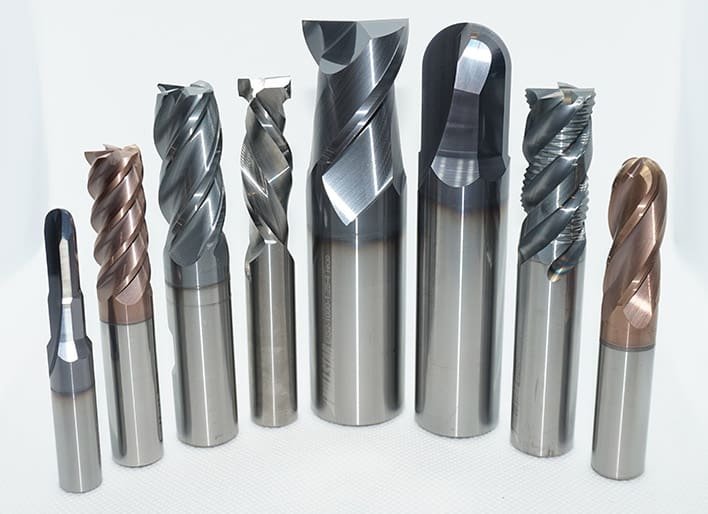
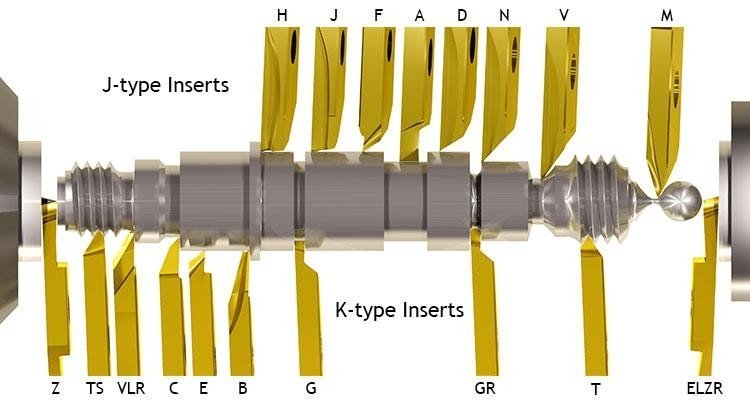
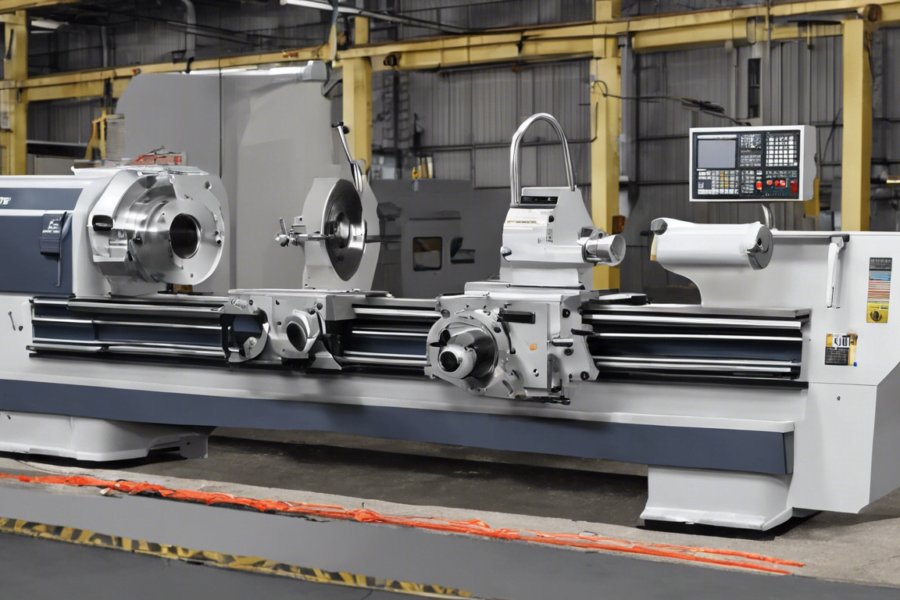

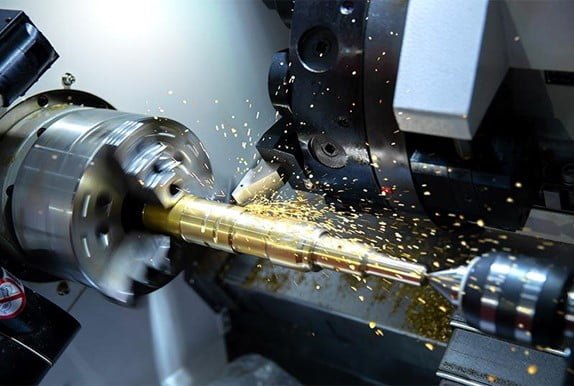
Leave a Comment